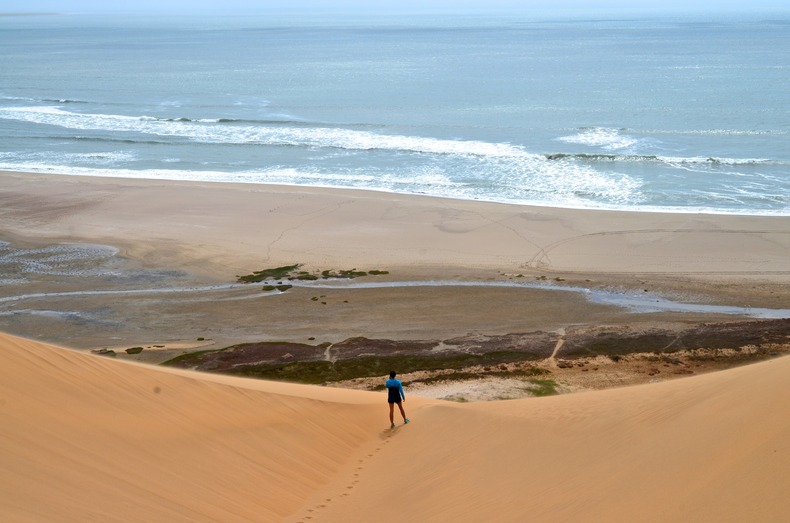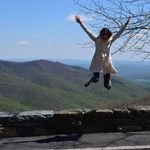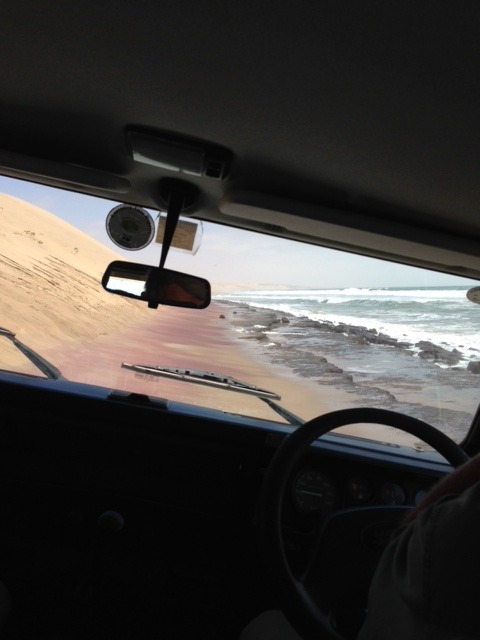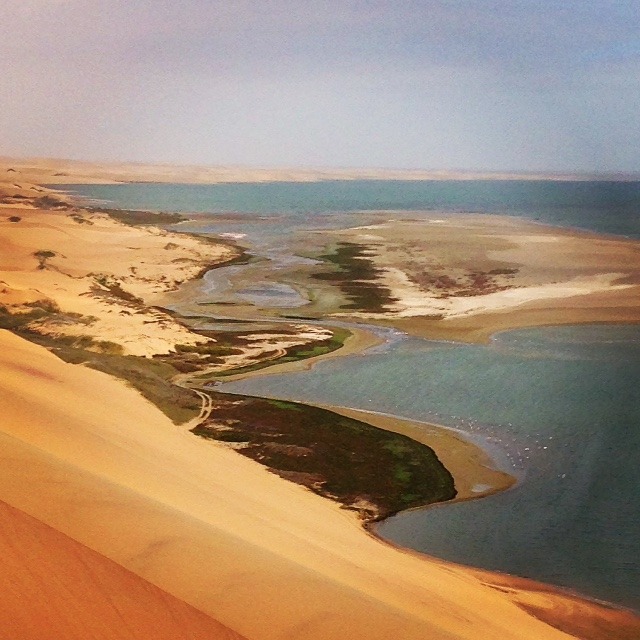
-Me looking out over Sandwich Harbour
This weekend we traveled by bus to Swakopmund and Walvis Bay, on the Atlantic. Swakopmund is a quaint little German town where many Namibians (especially those in Windhoek) holiday during the peak of the summer heat (December here in the Southern hemisphere). Walvis Bay is incredibly important economically as it’s the only deep sea port in Namibia—this is reflected by its history (The Portuguese first arrived in Walvis, and the area was subsequently occupied by the Cape Dutch, the British, the Germans and finally the South Africans). Although Namibia became independent in 1990, South Africa did not transfer Walvis Bay over until 1994 when the military base they kept became too costly and burdensome to maintain.
Swakopmund also has some incredibly dark history. While under German rule, it was the site of one of several concentration camps (unfortunately, the concentration camps were only one part of the genocide against the Herero and Nama people). Approximately 75,000 were killed during this “forgotten genocide,” which is also considered the first genocide of the 20th century. (See the 2010 Guardian article, http://www.theguardian.com/commentisfree/2010/jan/31/genocide-namibia).
But enough depressing colonial history (for now). After a not-so-scenic six hour bus ride from Windhoek, we arrived in Swakopmund where the air was cool and there was a pleasant breeze. Windhoek is quite warm this time of the year, staying in the 90s (F) most of the day so this was quite a welcome reprieve. We had heard wonderful things about Sandwich Harbour from guidebooks, always accompanied by cautionary advice: “DO NOT ATTEMPT TO GET TO SANDWICH HARBOUR ON YOUR OWN.” We had considered renting a car and giving it a go, but luckily we decided to be smart instead of brave.
Our guide was a seasoned Namibian outdoorsman who knew the area extremely well—he had lived there his entire life and had significant experience with the dangerous steep dunes/turbulent ocean combination. The dunes in the Walvis Bay area are serious. It was pretty scary traveling up the significant inclines—especially when the vehicle would tip pretty far sideways and we felt like we were going to roll over. Descending the dunes, it was so steep we were sure the vehicle would flip forward. If the vehicle had tipped forward or sideways, we would have probably been fine since the Land Rover seemed like it could survive an atomic bomb or two.
We continued onward, stopping to see a very impressive salt mining operation. When we reached the area where the dunes meet the ocean, it became increasingly dicey since the area on which you must drive is “sandwiched” between incredibly steep dunes on one side and the seemingly angry Atlantic Ocean on the other. Note, this area is referred to as the beginning of the Skeleton Coast—an ominous and appropriate name honoring the many ships that crashed here and left ship and human skeleton remains. When ships did crash and sink, the crew was simply out of luck since there was nothing but dessert for miles on the east and little freshwater to speak of. In other words, this is an incredibly treacherous area of the ocean and few humans dare to swim here (though there are quite a few seals).
To get from this point to Sandwich Harbour (our ultimate destination) initially our guide tried to avoid the watery path on the beach by going around and over the steep dunes. However, while attempting this alternate route we came to a point where the dunes were insurmountable (even for him!!) so instead we had to wait for the tide to go down (otherwise we would have literally had to drive through the ocean). Even after waiting for the tide to go down a bit, the vehicle still had to drive through a few feet of water during parts of the journey. Here's what we drove through:
The views on the way to and upon arrival at Sandwich Harbour were spectacular, particularly if you climb up to the top of the dunes. Here's a photo,though it doesn't quite capture it:
What I found quite a poetic ending to our excursion occurred on our return trip. On the way to Sandwich Harbour, we had previously passed a fallen structure, which had been taken over by the dunes. At that point, our guide mentioned that he had something to tell us about it on the return trip.
Once on the return trip, we arrived at the same fallen structure and our guide stopped the vehicle and told us that he had a photo to show us. He pulled out an image of the same structure which had been taken in 1981. In the photo, the building was intact and he and his family stood and peered back at us through the decades. Thirty three years ago, he had lived in this very building with his family and worked as a conservation officer. They had lived on this remote desert beach for years to ensure that humans did not endanger the fragile and unique ecosystem. How unexpectedly lovely.
Living in the world. Humanitarian. Advocate for health, human rights and equality. Documenting experiences and observations.


